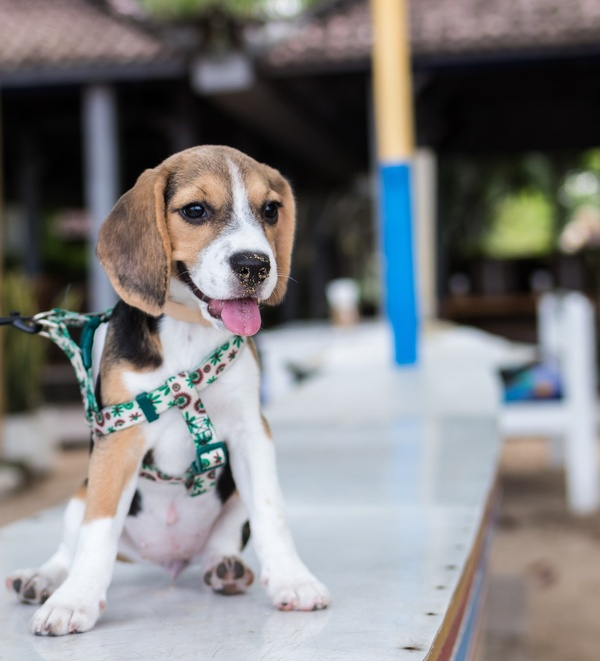
How to Leash-Train Your Puppy
If you’ve ever seen a model puppy walking flawlessly on their leash, and it spirals you into pet parent shame, just remember that it took puppy training to get there. No dog is born with the instinct to walk perfectly on a lead. They’re explorers and social greeters by nature — it’s one of the many reasons we love them — and using a leash is a skill that’s learned. Without training, most puppies will pull on the leash.
Walks are a great way to exercise, teach, and bond with your dog, and using a leash allows you to safely introduce them to new environments and experiences that help them develop and grow.
Leash-Training Starts in the Great Indoors
Leash training starts at home before paws even hit the pavement. Outfit your puppy with a comfortable collar or harness, and introduce them to their leash for short periods indoors. By giving them treats and affirmation while wearing their gear, you’ll help your dog foster a positive association with leash walking.
Start by practicing simple “stop” and “let's go” exercises inside, where there may be fewer distractions. This can help your pup get used to — and enjoy — both the sensation of their leash and you on the other end, which will help him pull on the leash less. And, don't forget about positive reinforcement — award good behavior with treats!
SEE ALSO: What to Feed Your Puppy
Step Outside & Start Walking
There’s no better test than the real world. Many puppy training experts and pet parents favor the popular “red light, green light” method to practice walking and to learn leash manners. When your dog pulls on their leash, stop immediately and limit their movement (red light). Once settled, call your dog back to you, have them sit, provide a treat, and continue walking (green light). The first time you leash train a puppy you'll stop a lot — be patient, your new puppy will get the hang of it!
Practice Makes Perfect
There’s bound to be a learning curve for any puppy, so be prepared to troubleshoot dog walking sessions with constant repetition. Puppies are always learning, and they’ll take cues from your behavior, particularly how you respond to their actions.
If your puppy pulls on their leash, an effective training tip is to stop walking until they return to you. Yanking on their leash can make them more resistant to being held back; some may even pull further to get away. Similarly, if your dog refuses to walk, don’t drag them along. Use treats and verbal commands to coax them back into movement.
It’s Not Me
A part of leash training is recognizing situations that may cause your puppy to react poorly to while on a walk. Adult dogs, foreign animals, strangers, sudden noises, skateboards, or crowds may cause your puppy to pull on their leash in a fight or flight instinct. In these cases, it’s about immediately containing and creating safe boundaries between your dog and whatever may be provoking them. You can also redirect their attention with rewards. Small treats and positive reinforcement are effective and lasting incentives for your puppy to follow your lead and stay at your side.
Until your puppy is fully leash-trained, consider every walk to be a training session. Consistency is key, and with the right dog training, management, and, of course, treats, you can put an end to their pulling.
Sources:
- https://clevelandapl.org/behaviorhelp/teaching-your-dog-not-to-pull-on-a-leash/
- https://pets.webmd.com/dogs/features/leash-training-dog#1
- https://www.humanesociety.org/resources/stop-your-dog-jumping
- https://www.cesarsway.com/putting-the-brakes-on-pulling-video/
- https://www.humanesociety.org/resources/dog-collars
- https://www.petexpertise.com/dog-training-article-training-your-dog-not-to-pull-on-the-leash/
- https://www.akc.org/expert-advice/training/teach-puppy-walk-leash/